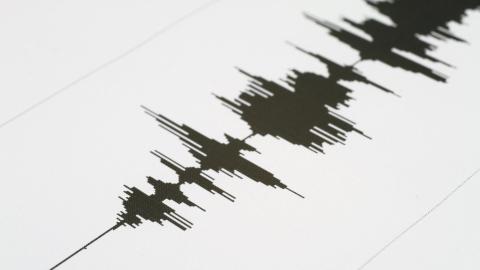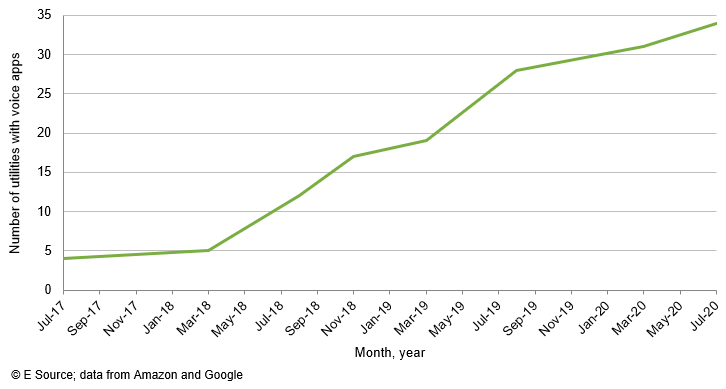
Nearly 30% of all homes in the US now have at least one smart speaker, according to the 2019 Claritas Technology Behavior Track survey, making smart speakers one of the most quickly adopted consumer electronic devices. And we expect that percentage to increase as the pandemic continues. In fact, smart speaker usage has increased since the start of the outbreak, according to the April 2020 The Smart Audio Report by National Public Radio and Edison Research, a market research company. As customers become more accustomed to using voice-responsive virtual assistants such as Amazon's Alexa and the Google Assistant for everyday needs, and getting relevant information from a range of organizations, utilities have a unique opportunity to engage with customers through voice apps and help support them during the current pandemic.
We’ve been tracking utility voice apps (called skills for Alexa and actions for the Google Assistant) since they first started to appear in 2017. And we’ve seen consistent year-over-year growth (figure 1). We found 56 utility-branded voice apps, across 34 utilities, on Amazon Alexa and the Google Assistant. E Source members can access the complete list—and a breakdown of the features offered—in our report Utility apps for voice assistants and smart speakers: A catalog of utility skills and actions for Amazon Alexa and the Google Assistant.
Figure 1: Utilities have been developing more voice apps over the past three years
We expect smart speakers and voice assistants to be an increasingly important channel for utilities—especially given the need for additional customer support during COVID-19.
Most of today’s utility voice apps focus on providing basic functionality such as sharing the current account balance, generic efficiency tips, and billing information. But there’s plenty of room to expand beyond those basic features and offer more-sophisticated functionality. For example, utilities could offer these features via voice apps:
- Allowing customers to pay their bills
- Providing information on how the utility is responding to the pandemic
- Sharing tailored energy-efficiency suggestions based on historical account data
- Walking customers through a virtual home energy audit
- Connecting customers with utility programs
- Promoting trade allies when customers ask for suggestions on energy-efficiency upgrades
Given the rapid adoption of smart speakers and voice assistants, customers’ willingness to engage with them, and the need for additional customer support during COVID-19, we expect these platforms to be an increasingly important channel for utilities. Since utility voice apps are a newer technology, there’s still plenty of room to grow and expand functionality to better engage customers.
Want more ideas on how to build or improve your voice app? Check out our white paper Voice control changes everything: Why utilities should care about virtual assistants. And if you’re an E Source member, you can go to our Smart home resource center, which houses all our smart home–related content.
